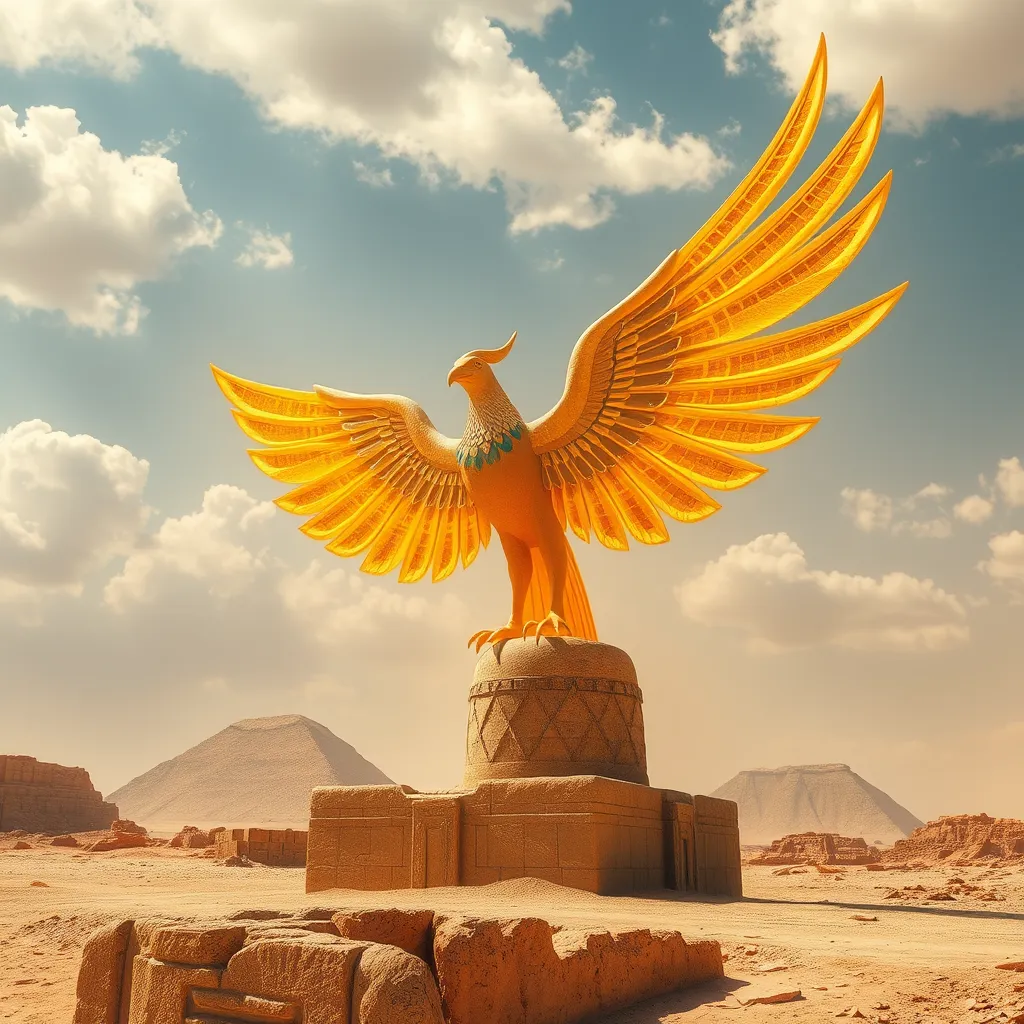The Phoenix in Ancient Egypt: The Benben Stone and the Myth of the Sunbird
I. Introduction
The myth of the Phoenix has captivated human imagination across various cultures throughout history. This mythical bird, known for its ability to rise from its ashes, symbolizes rebirth and immortality. In Ancient Egyptian mythology, the significance of the Phoenix extends beyond mere symbolism; it intertwines with key elements such as the Benben Stone, a sacred object in the creation narrative.
In this article, we will explore the rich tapestry of the Phoenix myth in Ancient Egypt, focusing on its origins, the powerful symbolism of the Benben Stone, and the representation of the Sunbird. Through an examination of ancient texts and artistic depictions, we will uncover the enduring legacy of these symbols within and beyond Egyptian culture.
II. The Origins of the Phoenix Myth
The origins of the Phoenix myth can be traced back to ancient civilizations, with Egypt being a significant contributor to its narrative. The earliest references to a bird associated with rebirth appear in the context of the sun god Ra. This mythological bird was often depicted as a flaming creature, symbolizing the sun’s journey across the sky.
Connections to other ancient civilizations highlight a shared understanding of the Phoenix symbol. For example:
- In Greek mythology, the Phoenix is described as a bird that is consumed by fire and then resurrected from its ashes.
- Persian myths speak of a bird known as the “Simurgh,” which also embodies themes of renewal and immortality.
Over time, the Phoenix symbol evolved, adapting to the cultural and spiritual needs of different societies. In Ancient Egypt, it became firmly associated with the concept of rebirth, particularly in relation to the sun and the afterlife.
III. The Benben Stone: Symbol of Creation
The Benben Stone is a pivotal symbol in Ancient Egyptian mythology, representing creation and the primordial mound from which life emerged. This stone is often described as a pyramidal or conical shape, and it is associated with the sun god Ra, who is believed to have emerged from it during the creation of the world.
The role of the Benben Stone in the creation myth is profound:
- It is said to be the first solid object created by the god Atum.
- It represents the point of creation, where the chaos of the waters of Nun gave way to order and life.
Furthermore, the Benben Stone’s association with Ra emphasizes the themes of light, life, and rebirth, as the sun rises each day, symbolizing the cyclical nature of existence.
IV. The Sunbird: Representations and Symbolism
In Egyptian mythology, the Sunbird is often identified with the Phoenix. It embodies the themes of resurrection and renewal, resonating with the cycles of nature. The Sunbird is depicted as a magnificent creature with vibrant feathers, often associated with the sun and its life-giving properties.
The symbolic meanings associated with the Sunbird are diverse:
- It represents the daily resurrection of the sun, rising each morning.
- It signifies the cycle of life, death, and rebirth.
- Its flames are seen as purifying, leading to transformation.
The connection of the Sunbird to the life cycle highlights its importance in agricultural societies, where the sun is vital for growth and sustenance.
V. The Myth of the Phoenix in Egyptian Texts
Ancient Egyptian texts serve as a valuable resource for understanding the role of the Phoenix in their culture. References to the mythical bird appear in various forms, from religious texts to funerary inscriptions.
One notable aspect is the interpretation of the Phoenix’s role in funerary practices:
- The Phoenix symbolizes the soul’s journey after death, emphasizing the belief in an afterlife.
- It represents the cyclical nature of existence, where death is merely a transition to another life.
Moreover, the Phoenix can be seen as a metaphor for immortality and resurrection, reinforcing the belief that life continues beyond physical death.
VI. Artistic Representations of the Phoenix and Benben Stone
Artistic depictions of the Phoenix and the Benben Stone are abundant in ancient Egyptian art. These representations often convey deep religious and cultural meanings, emphasizing the importance of these symbols in daily life and spirituality.
Key aspects of these artistic representations include:
- Hieroglyphics and paintings that depict the Phoenix rising from ashes.
- Sculptures featuring the Benben Stone, often placed in temples as a symbol of creation.
- Frescoes illustrating the Sunbird, connecting it to the cycles of nature.
The significance of these representations extends beyond aesthetics; they were integral to rituals and religious practices, reinforcing beliefs in renewal and the divine.
VII. Legacy of the Phoenix in Modern Culture
The legacy of the Phoenix continues to thrive in modern culture, where it serves as a powerful symbol in contemporary literature, art, and popular media. The themes of rebirth and renewal resonate with audiences across generations.
Some notable comparisons include:
- In literature, the Phoenix is often used to symbolize hope and resilience, as seen in works like J.K. Rowling’s “Harry Potter” series.
- In art, the imagery of the Phoenix has influenced various movements, symbolizing transformation and the human spirit’s endurance.
The continued relevance of the Phoenix in discussions of rebirth and renewal reflects its deep-rooted significance, echoing the beliefs of ancient civilizations.
VIII. Conclusion
The Phoenix myth holds a place of great significance in Ancient Egyptian culture, intricately tied to the Benben Stone and the Sunbird. These symbols of creation and renewal continue to resonate with humanity, serving as reminders of life’s cyclical nature.
As we reflect on the enduring power of the Benben Stone and the Sunbird, we recognize their cultural impact, transcending time and space. The story of the Phoenix, with its themes of rebirth and immortality, remains a poignant symbol of hope, inspiring generations to embrace change and transformation.



